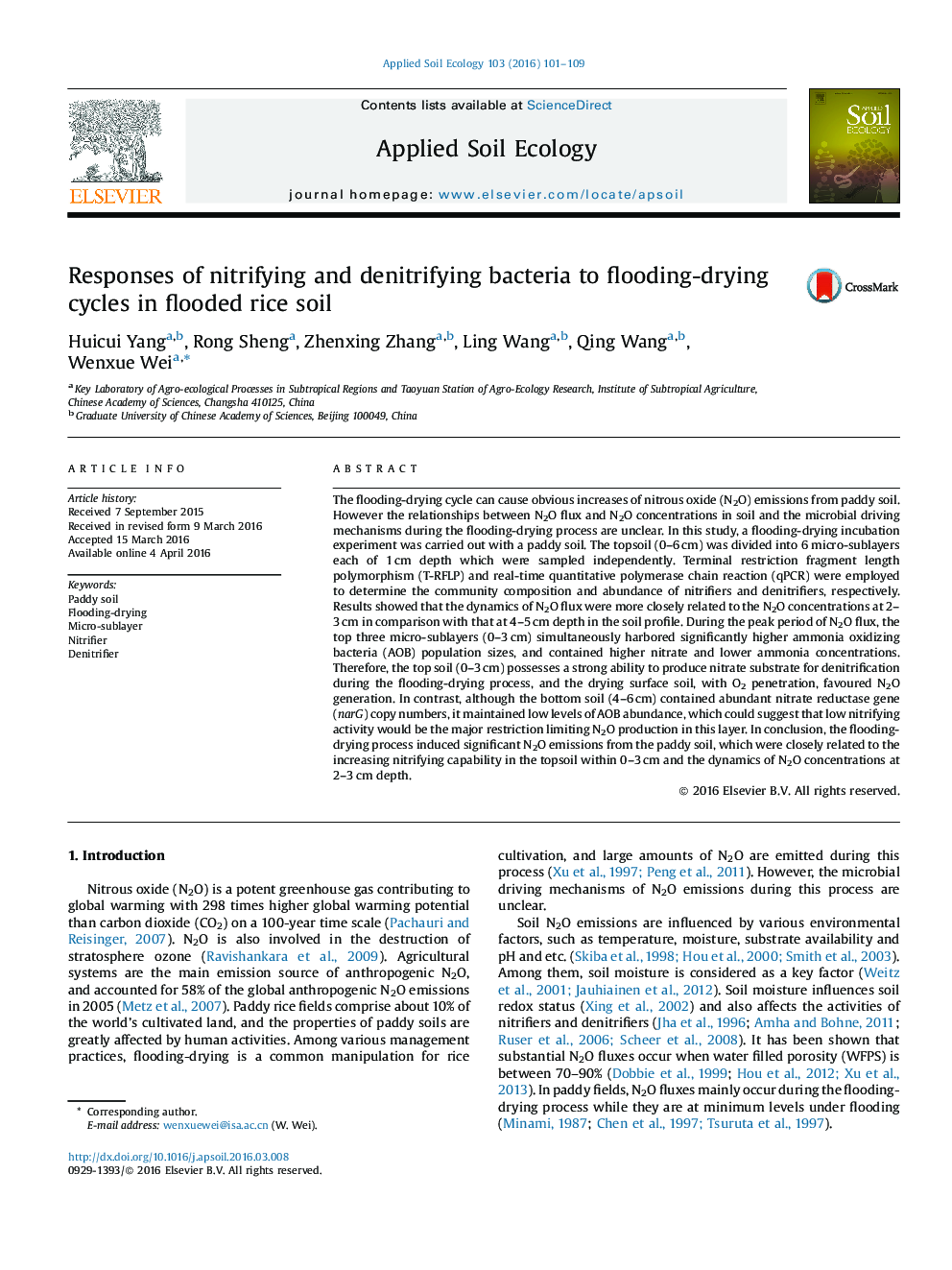| کد مقاله | کد نشریه | سال انتشار | مقاله انگلیسی | نسخه تمام متن |
|---|---|---|---|---|
| 4381787 | 1617780 | 2016 | 9 صفحه PDF | دانلود رایگان |
• N2O flux was closely related to N2O concentration in uppermost soil microlayers.
• Drying induced high nitrification and denitrification in uppermost soil microlayers.
• Low nitrifying activity restricted N2O production in bottom soil microlayers.
The flooding-drying cycle can cause obvious increases of nitrous oxide (N2O) emissions from paddy soil. However the relationships between N2O flux and N2O concentrations in soil and the microbial driving mechanisms during the flooding-drying process are unclear. In this study, a flooding-drying incubation experiment was carried out with a paddy soil. The topsoil (0–6 cm) was divided into 6 micro-sublayers each of 1 cm depth which were sampled independently. Terminal restriction fragment length polymorphism (T-RFLP) and real-time quantitative polymerase chain reaction (qPCR) were employed to determine the community composition and abundance of nitrifiers and denitrifiers, respectively. Results showed that the dynamics of N2O flux were more closely related to the N2O concentrations at 2–3 cm in comparison with that at 4–5 cm depth in the soil profile. During the peak period of N2O flux, the top three micro-sublayers (0–3 cm) simultaneously harbored significantly higher ammonia oxidizing bacteria (AOB) population sizes, and contained higher nitrate and lower ammonia concentrations. Therefore, the top soil (0–3 cm) possesses a strong ability to produce nitrate substrate for denitrification during the flooding-drying process, and the drying surface soil, with O2 penetration, favoured N2O generation. In contrast, although the bottom soil (4–6 cm) contained abundant nitrate reductase gene (narG) copy numbers, it maintained low levels of AOB abundance, which could suggest that low nitrifying activity would be the major restriction limiting N2O production in this layer. In conclusion, the flooding-drying process induced significant N2O emissions from the paddy soil, which were closely related to the increasing nitrifying capability in the topsoil within 0–3 cm and the dynamics of N2O concentrations at 2–3 cm depth.
Journal: Applied Soil Ecology - Volume 103, July 2016, Pages 101–109
